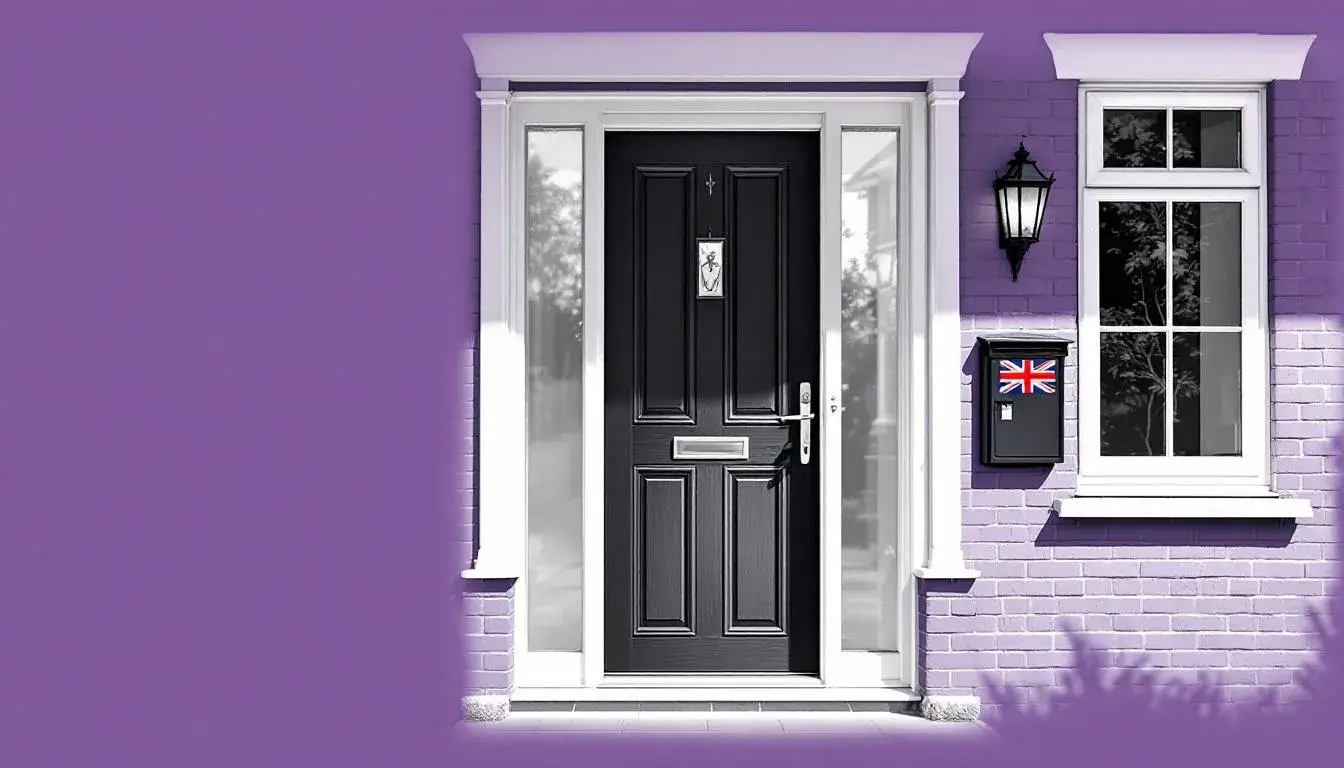
Secured loans for bad credit explained

What a secured loan could mean for you
If your credit history is less than perfect, finding affordable borrowing can feel like a closed shop. Secured loans change that equation. By using property as collateral, you can often access lower interest rates and larger borrowing amounts than with credit cards or unsecured personal loans. UK lenders price risk carefully, and collateral reduces their exposure, which is why approvals can be easier for borrowers with past blips. Typical amounts range from around £10,000 to well over £500,000, subject to equity and affordability.
In early 2025 the Bank of England reported lenders increasing the availability of secured credit to households, with expectations of further expansion. For borrowers, that points to a healthier supply of options and potentially sharper pricing where the case stacks up. It does not remove risk. Default rates have fluctuated, so lenders remain vigilant and underwriting remains detailed. For you, that means a thorough look at income, expenditure and property value alongside credit history.
Understanding APR is not just about percentages - it is about pounds and pence over time. For strong cases, secured loan pricing for bad credit may start around 7 to 8 percent APR, but the APRC you receive can be higher once fees and term are factored in. Longer terms, commonly five to twenty years, can make monthly payments more manageable, yet the total interest paid across the term can be substantial. Getting personalised quotes is essential to see real costs, not headline rates.
There is a hard truth to weigh. Collateral lowers your rate but raises your personal risk. Missed payments can damage your credit score and, in the worst case, put your home at risk of repossession. For financially vulnerable households, the pull of high cost credit or even illegal lenders can be strong when cash is tight. Safer, regulated secured lending can be part of the solution, but only when repayments are genuinely affordable and the purpose is sound, such as consolidating expensive debts or funding home improvements that add value.
Clarity beats guesswork. Compare the full APRC, test affordability conservatively, and plan for shocks before you sign.
Kandoo is a UK-based retail finance broker, helping customers navigate these choices with regulated lenders. Whether you are consolidating debt or financing a big project, the priority is the same: transparent costs, realistic terms and a repayment plan you can stick to.
Who benefits most from this approach
Secured borrowing is well suited to homeowners who have equity and a stable income, but whose credit file shows missed payments, defaults or high utilisation that limit unsecured options. If you are juggling high cost credit, a secured consolidation loan can reduce monthly outgoings and simplify repayments, provided the term and total cost are sensible. It can also help rebuild your credit history if you pay on time, every time. For home improvement projects, secured loans can fund larger budgets at lower rates than many credit cards. However, if your income is irregular or your budget is already stretched, the risk of securing debt on your home may outweigh the benefits. In that case, smaller steps, debt advice or alternative products may be safer.
Jargon made simple
APR vs APRC: APR is the annual cost of borrowing as a percentage. APRC includes interest plus compulsory fees across the full term, giving a truer like-for-like comparison.
Collateral: An asset used to secure the loan, typically your home. It reduces lender risk but exposes you to repossession if you default.
Equity: The difference between your property value and existing mortgages or charges. More equity can increase borrowing limits and improve pricing.
LTV (Loan to Value): The loan as a percentage of your property value. Lower LTVs usually mean better rates.
Term: The length of the loan. Longer terms cut monthly payments but increase total interest.
Credit profile: Your repayment history and behaviours recorded by UK credit reference agencies. Consistent on-time payments can rebuild it over time.
Debt consolidation: Rolling multiple debts into one loan. It can reduce the monthly burden but may extend the repayment period.
Your main routes to consider
Secured debt consolidation loan: Combine credit cards, catalogues and personal loans into one secured loan with a lower rate and longer term. Aim to avoid reborrowing on cleared cards to lock in savings.
Secured home improvement loan: Finance renovations or energy upgrades. Potential to add value to your property while accessing structured, potentially lower-cost credit.
Second charge mortgage: A secured loan that sits behind your existing mortgage. Useful if remortgaging would lose you a good rate or incur early repayment charges.
Remortgage with additional borrowing: Replace your current mortgage and add funds. Attractive if mortgage rates beat second charge rates, but check fees and any early repayment charges.
Guarantor-assisted secured loan: Less common, but some lenders consider additional support. Assess carefully as responsibilities and risks extend to the guarantor.
Rule of thumb: compare the full APRC, fees and early repayment policies across at least three options before deciding.
What it costs, what it changes
| Aspect | Typical range or outcome | What to watch |
|---|---|---|
| Rate guide for bad credit | From ~7-8% APR for strong cases, often higher APRC | Fees and term can lift the APRC significantly |
| Borrowing amounts | ~£10,000 to £500,000+ dependent on equity and affordability | Higher LTV can increase pricing |
| Terms | 5 to 20 years common | Longer terms lower payments but raise total interest |
| Monthly impact | Often lower than cards or unsecured loans | Ensure savings are not erased by longer terms |
| Credit score effect | Positive with consistent on-time repayments | Missed payments harm score and risk repossession |
| Risks | Securing debt against your home | Variable rate exposure and charges on arrears |
Do you qualify in practice
Lenders in the UK look beyond a headline credit score. They review your income, employment stability and verified expenditure to assess affordability under realistic stress tests. Property value and available equity determine how much you can borrow and at what loan to value, which in turn influences pricing. If you have bad credit, an explanation and evidence of improved behaviour can help. Defaults and CCJs do not automatically rule you out, especially if they are older and settled, but recent arrears will narrow choices. Lenders also check existing mortgages and any charges on the property. If remortgaging is costly due to early repayment charges, a second charge may be more suitable. Expect identity, residence and bank statement checks, plus a valuation of your property. The goal is a loan that remains affordable even if rates rise or your circumstances tighten.
From quote to funds - the steps
Check credit files and correct any errors promptly.
Set a realistic budget using stress-tested repayments.
Request personalised secured loan quotes and APRC.
Compare options, fees and early repayment terms.
Submit documents, affordability details and property information.
Property valuation and underwriting assessments completed.
Receive offer, review conditions, and take independent advice.
Sign documents and draw down funds responsibly.
Upsides and drawbacks at a glance
| Pros | Cons |
|---|---|
| Lower rates than many unsecured products for bad credit | Your home is at risk if repayments are missed |
| Easier approval due to collateral and holistic assessment | Longer terms can increase total interest paid |
| Larger loan amounts for major projects or consolidation | Fees and charges raise the APRC beyond headline rate |
| Potential to rebuild credit with on-time payments | Variable rates can increase repayments over time |
Pay on time and you may rebuild your credit profile. Miss payments and costs escalate quickly.
Read this before you proceed
Securing borrowing against your home is a serious decision. Start with your budget and a conservative view of future income, including potential rate rises. If you are consolidating, cut up or freeze old cards to stop balances creeping back. Scrutinise the APRC, not just the headline APR, and factor in valuation, broker and lender fees. Ask about early repayment charges and whether partial overpayments are allowed without penalty. If you have any doubt about affordability or the suitability of a product, seek independent debt advice. Avoid informal lenders entirely. Illegal money lending remains a problem in parts of England and can spiral into financial and personal harm. Regulated lenders and brokers provide clearer protections and redress if things go wrong.
Alternatives if a secured loan is not right
Unsecured personal loan with a shorter term - smaller amounts, no charge on your home.
0% balance transfer card - useful for disciplined debt shifters who can clear within the offer period.
Debt management or DMP via a reputable charity - reduces pressure without securing debt.
Remortgage later - wait for improved credit and equity to access better pricing.
Government or local authority schemes - check for home energy or improvement grants before borrowing.
Questions people ask most
Q: What rate could I realistically get with bad credit? A: Strong cases can start around 7 to 8 percent APR, but your APRC may be higher once fees and term are included. Personalised quotes show the true cost.
Q: Will a secured loan improve my credit score? A: It can do if you make every payment on time. Missed payments will harm your score and increase the risk to your home.
Q: How much can I borrow? A: Amounts typically range from about £10,000 to more than £500,000, depending on equity, income and expenditure. Lower LTV usually brings better pricing.
Q: Is a second charge better than remortgaging? A: It depends on your mortgage rate and any early repayment charges. A second charge can preserve a good main mortgage while adding funds separately.
Q: Are secured loans safe if I have unstable income? A: Caution is needed. If income is variable, the risk of arrears and potential repossession rises. Consider alternatives or wait for stability.
Q: What is changing in 2025 for borrowers? A: Lenders report increased availability of secured credit, suggesting broader choice. Underwriting remains careful, so affordability evidence is still crucial.
Ready to take the next step
Gather your documents, firm up a budget and request personalised quotes that include the full APRC. Compare at least three lenders or work with a regulated UK broker like Kandoo to explore second charge and remortgage options side by side. Aim for a loan that you could still repay if rates rise and your costs increase.
Important information
This guide is for general information only and does not constitute financial advice. Securing a loan against your property puts your home at risk if you do not keep up repayments. Always consider independent advice before committing.
Buy now, pay monthly
Buy now, pay monthly
Some of our incredible partners
Our partners have consistently achieved outstanding results. The numbers speak volumes. Be one of them!


FCBeautyUK

Hollywood Glamour Aesthetics










